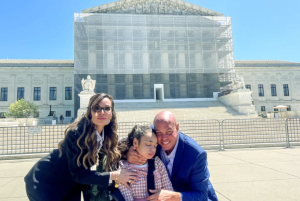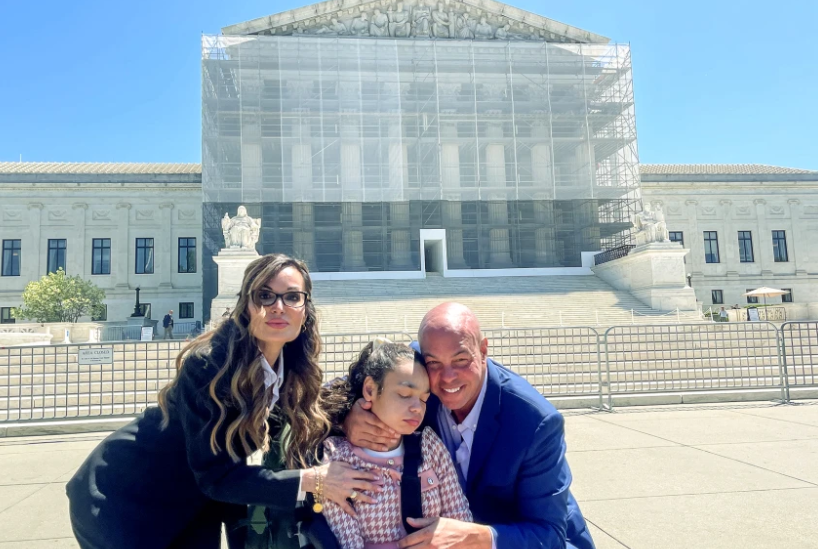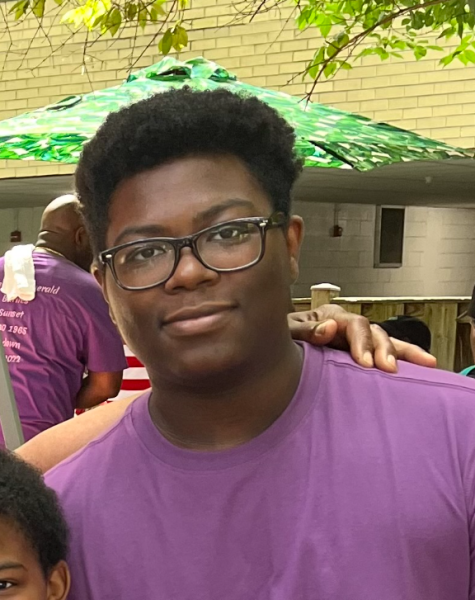South Lakes’ awaited play, “Radium Girls,” opened on November 14th with an unexpected turnout and ran until the 16th. Many students couldn’t wait to see the hard work their classmates and friends put into this production. Other students couldn’t escape the fliers hanging in the school’s hallways and staircases; the anticipation had been high for weeks.
“Radium Girls” is a historical fiction play that tells the story of the women who had been affected by radium poison, commonly leading to death. Act I follows Grace Fryer (Sitina Tochterman), a woman working for the United States Radium Corporation, with her friends Kathryn Schaub (Lily Ingraham) and Irene Rudolph (Lucy Gould). The girls are depicted to be like any other person: silly, light-hearted friends who are still professional about their work and often scolded by their supervisor, Mrs. Alma MacNeil (Colette Panatier). The girls are introduced to the new president of the U.S. Radium Corporation. Arthur Roeder (Liam Birch), who plans to make some changes in the business. Grace lives with her mother, Anna Fryer (Iman Hassan), and prepares for a life with her betrothed, Tom Kreider (Jahlil Greene). This life of plans and opportunities swiftly falls apart as the girls get sick.
The production uses a permanent set depicting the U.S. Radium Corporation facility. The stage floor was designed to be the girl’s workspace. Upstage is a raised platform with wooden shelving units placed underneath. The shelving units contain tools and equipment. The shelving units were locked behind gates, occasionally closed depending on whether the girls were on the clock. Desks and chairs were placed upon the platforms to resemble office rooms. Desks and chairs were placed near the audience to resemble a reporter’s office; the desk holds a lamp and time-accurate typewriters.
In the show, the minimal but beautiful set, with a couple of sets and hand props here and there, allows the audience to focus on the detailing of the lighting, sound, and acting.
When we enter Grace’s home in scene four, the set consists of only a dinner table and chairs and a couple of props on the table. While on center stage left, we can still see some girls working in the facility, dimly lit, while the more significant light focuses on the Fryer home. The lighting makes it clear that two different scenes are presented as one. Later examples of lighting come in Act II when Grace is at Kathryn’s gravesite and painting with watercolors, and Arthur walks by, recognizing the spot where Grace stands staring at him. The lighting on Grace was noticeably brighter than the spotlight on Arthur, emphasizing that Grace wasn’t there in the present. The projections on the cyclorama give the audience important information, filling them in on what happened between scenes, time skips, and who the characters are based on.
The cast’s acting skills blew the audience away. These actors were able to channel their emotions to fit the narrative perfectly. Sitina embodied Grace’s grief amazingly. You could feel Grace’s frustration when Arthur couldn’t even look at her and take an ounce of accountability for what had happened to her and her friends. Liam amazingly executed Arthur’s descent into massive regret. Liam’s presence was felt on stage even when he isn’t under the spotlight; we’re able to see his change in manner towards the events helped the audience get a view of Arthur’s hopes, dreams, and his increasing self-resentment and disgust surrounding his work and life choices, as he wants to be the best while also being morally correct and those ideas continue to clash. The Reporters, Jack Youngwood (Colby Smith) and Nancy Jean Harlan (Eliana Redford), are essential in informing the audience of all the off-stage occurrences and press releases. The actors knocked it out of the park with their performances. Both actors’ voices, body language, and bold presence on stage brought a lot to the performance, especially when they connected all events to the main storyline.
The various sound effects and audio enhanced the performance significantly. The whistle informed the audience that working hours had just begun, allowing a smooth transition between scenes. The sound of birds chirping informs the audience that the scene takes place outdoors, a creative way to clue the audience in on what is happening without the necessity of crowding the stage with multiple props. The music used throughout the performance quickly sets the mood for each scene.
Some scenes stand out because of these technical and acting techniques, like the final scenes with Grace painting the scenery at Kathryn’s grave. The relaxing and peaceful music symbolizes Grace finding peace in the aftermath, confirming her peace and happiness with Tom. It might not be what she imagined initially, but she got the ending she wanted—just her and her watercolors.
The closing scene saw all the radium girls come out onto the stage. Three-stage lights facing the audience shone neon green lights past the radium girls and neon green light shone across the cyclorama, highlighting their silhouettes as they walked off the stage. A quote is projected onto the cyclorama: “If everything around is dark, look again. You may be the light.” This quote references Grace’s stance. She rose above all trials and tribulations and guided the way to justice.
Overall, the passion behind this production was immensely apparent. The crew beautifully and creatively built the set, and the students displayed terrific acting skills. The direction of the production provided a clear vision without drowning out the play’s message.
The theatre program’s theme for this year is ‘defying expectations.’ After seeing this performance, many are excited to see what the theater has planned for its upcoming spring musical, “Once Upon a Mattress.”

























